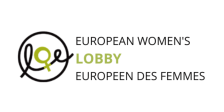Women’s organisations dispute ‘good news’ of nomination of nine women to new Commission and point to gender stereotyping in the distribution of the portfolios
EWL Press Release, 07 December 2010
Over the last few weeks, the 27 men and one woman who make up the European Council have been heartily congratulating themselves on their supposed sensitivity to equality between women and men and the fairness they demonstrated in appointing a number of women to top positions in the Council of the European Union and Commission. The European Women’s Lobby (EWL), representing more than 2500 women’s associations from across Europe, feels that congratulations are not quite in order.
‘This is not at all a result to be proud of’, says Myria Vassiliadou, EWL Secretary General. ‘Even this low figure of one-third represents a grudging and last minute response.’
A week prior to the 19-20 November 2009 Summit, the number of women to be nominated to the European Commission (EC) stood at three out of 20. Those countries who were still sorting out their nominations were suddenly in the spotlight and under sustained pressure to right the balance by choosing women. This pressure came from the EWL and its members and other activists for women’s rights, from President Barroso and also from the European Parliament (EP). The EWL joined forces with female MEPs and other campaigns such as ‘Gender Balanced Commission’ to demand equality in the EC and a veto from the EP of any Commission that did not contain at the very least one third female nominees.
‘Gender equality is one of the fundamental values and aims of the EU but it is clear that the current system of nominations to the Commission is undemocratic, un-transparent and fails to respect this basic principle’, says EWL President Brigitte Triems. ‘Appeals to a sense of democratic duty are evidently not enough. It is time we had binding measures to ensure equal representation of women and men within the European Institutions.’
With one third women in the Commission, the EU’s Executive performs better in terms of gender balance than most national European governments, where the average is 22%.
Stereotyped portfolios
The distribution of the various portfolios has also raised eyebrows among those monitoring gender equality. While half of the eight economic portfolios under the outgoing Commission were held by women, President Barroso has failed to give a single such portfolio to a woman this time around. Competition, Industry and Entrepreneurship, Economic and Monetary Affairs, Internal Market, Taxation, Trade, Budget, Energy and Employment are all to be managed by male Commissioners. This glaring absence of women in the fields where the power of the EU is the strongest seems at odds with Mr. Barroso’s promise to give better portfolios to member states putting forward female nominees.
‘We are surprised and disappointed to see such a stereotypical distribution of the portfolios according to gender’, comments Ms. Vassiliadou. ‘The fact that no women have been given economic mandates is particularly worrying given widespread hopes that restructuring in light of the financial and economic crisis would lead to greater gender equality in this field.’
At present, there is no woman head of a central bank in Europe. On the business side, there are only 3% women presidents in the largest publicly quoted companies. The top 300 European companies had 9.7% of women on their boards in 2008.
In 2008, Norway implemented legislation requiring a minimum of 40% female representation on boards. Last week, the French governing party submitted a bill to parliament calling for gender balance in boardrooms by 2015.




